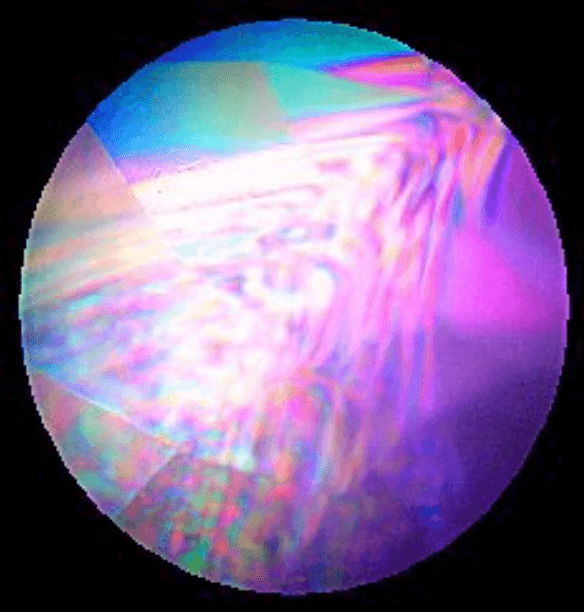Professional Gemologist Certification Course
Polariscope Guide, Part 3: Testing For Gemstone Twinning, Dichroism, and Crystal Strain
Gemstone Twinning
A crystal doesn’t always form in a single step. If one of the required elements for a crystal’s growth is depleted, it will stop growing. When the proper mix of ingredients is present again, growth will resume. Some crystals will continue to grow as a whole, without any division. Others will grow in layers, one on top of the other. This is known as twinning.
Gemstone twinning is most common in corundum and quartz. It appears in your polariscope as parallel layers of color. Since the layers can be polarized in opposite directions, this can affect your readings.
Corundum with extreme twinning will be light in all directions in the polariscope. This usually indicates an aggregate. Check for double refraction with a dichroscope.
Twinning is absent in most synthetic quartz. Some new synthetics show twinning, but these are rare. If you find twinning in a quartz family gem, it’s probably natural. Its absence proves nothing. There may be no twinning in a natural gem or you may not be able to find it. This is especially common in light-colored gems. Examine the gem immersed in a high refractive index (RI) liquid or fit your filters…
Donald Clark, CSM IMG
Never Stop Learning
When you join the IGS community, you get trusted diamond & gemstone information when you need it.
Get Gemology Insights
Get started with the International Gem Society’s free guide to gemstone identification. Join our weekly newsletter & get a free copy of the Gem ID Checklist!
